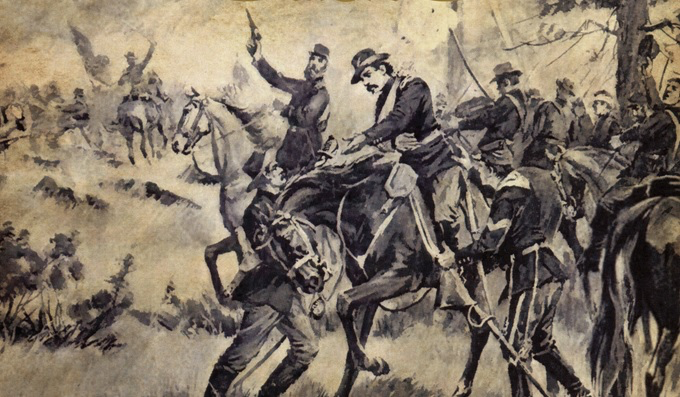Last updated: November 2, 2021
Article
Protecting Civil War Battlefields in the Shenandoah Valley

Shenandoah Valley Battlefields Foundation, Courtesy of Terry Heder
This past September was a big month at the Shenandoah Valley Battlefields National Historic District: in addition to celebrating its 25th Anniversary, the heritage area was awarded a total of $435,000 in two grants from Virginia’s Department of Historic Resources (DHR). These funds will help the NHA in their efforts to preserve more than 250 acres of historic Civil War battlefields.

SVBF
Shenandoah Valley Battlefields Historic District was designated as a national heritage area by Congress in 1996. After a rigorous evaluation process this year, the Virginia Department of Historic Resources selected the heritage area’s management entity, the Shenandoah Valley Battlefields Foundation (SVBF), for two grants from the Virginia Battlefield Preservation Fund (VBPF). These awards will enable the SVBF to purchase easements on portions of two key battlefields.

SVBF, Courtesy of Terry Heder

Shenandoah Valley Battlefields Foundation
Hunter quickly exploited this vulnerability and sent an entire brigade into the opening. Jones tried to rally his men, but was shot in the head and was killed instantly. The Confederate line collapsed, with the retreat becoming a rout. More than 1,000 Confederates were captured. For the first time in the war, Union forces had control of the Shenandoah Valley. Staunton, and other critical points to the south, were then open to the Union Army.

Shenandoah Valley Battlefields Foundation
Hunter quickly exploited this vulnerability and sent an entire brigade into the opening. Jones tried to rally his men, but was shot in the head and was killed instantly. The Confederate line collapsed, with the retreat becoming a rout. More than 1,000 Confederates were captured. For the first time in the war, Union forces had control of the Shenandoah Valley. Staunton, and other critical points to the south, were then open to the Union Army.
You can learn more about the Battles of Piedmont and Fisher’s Hill along with many other key Civil War events in the region on the Shenandoah Valley Battlefields site. For more information on the Virginia Battlefield Preservation Fund from the Virginia DHR, visit the full 2021 grant award press release here.
